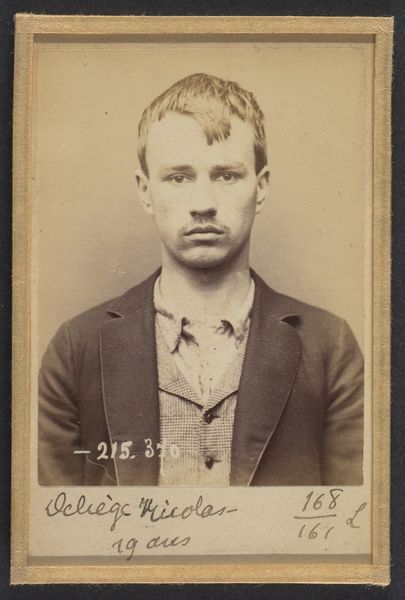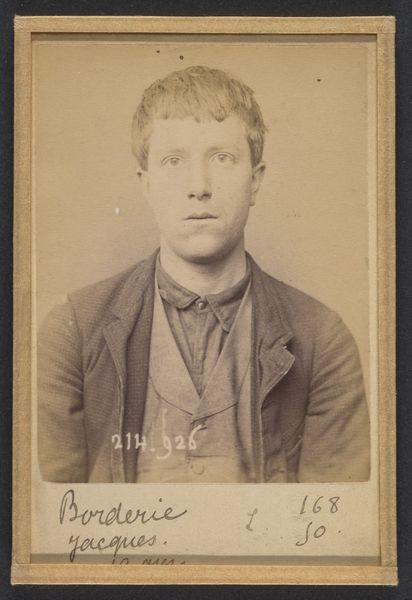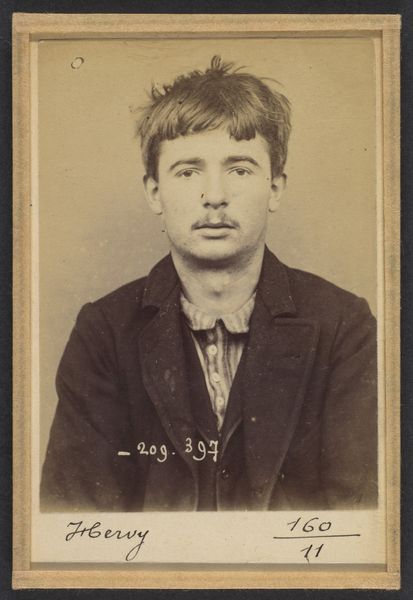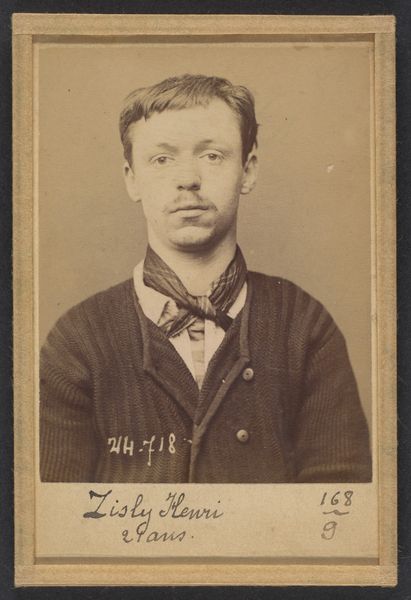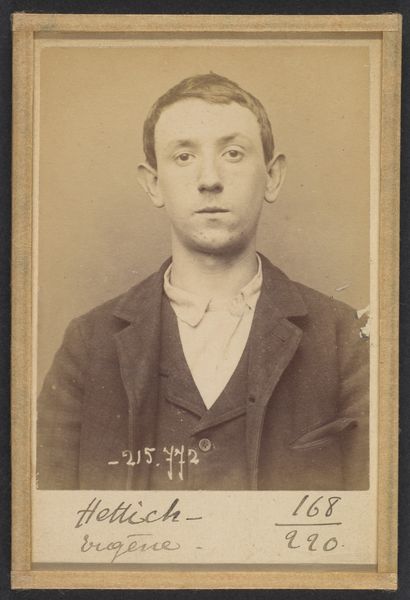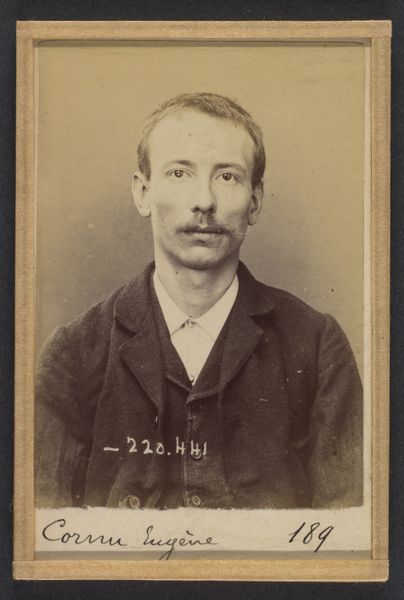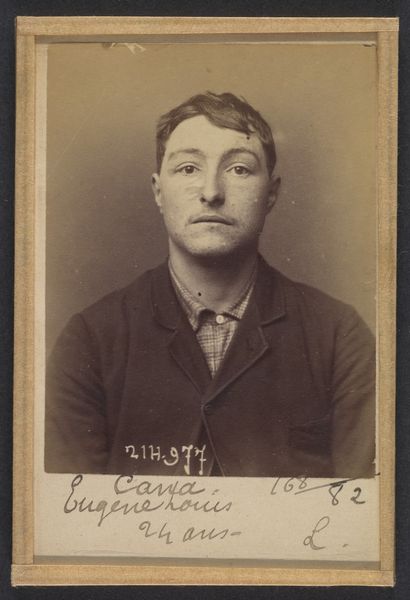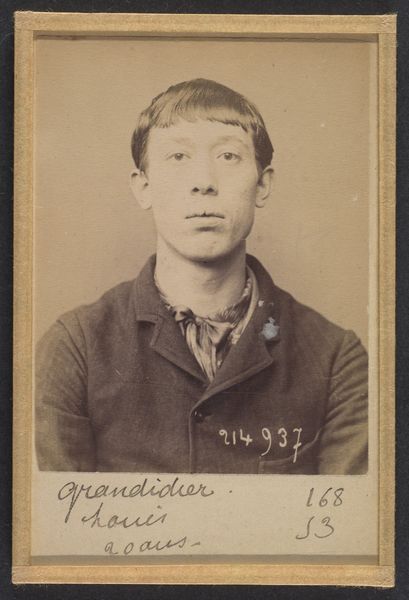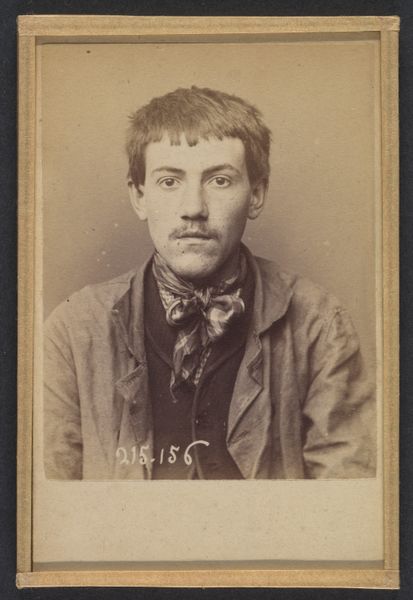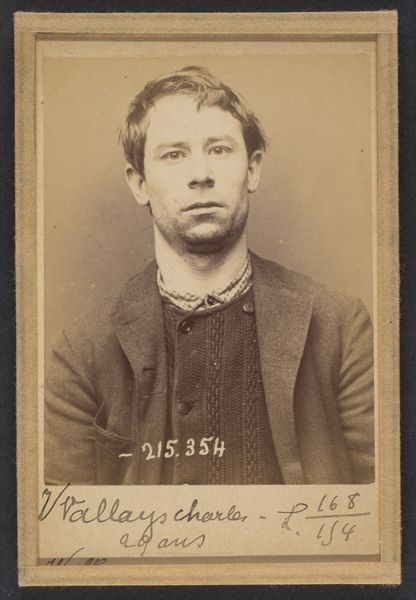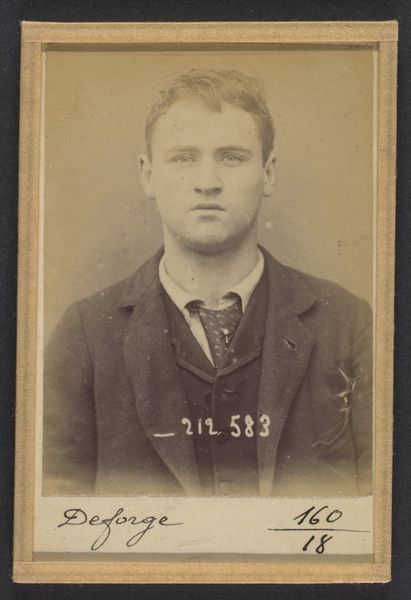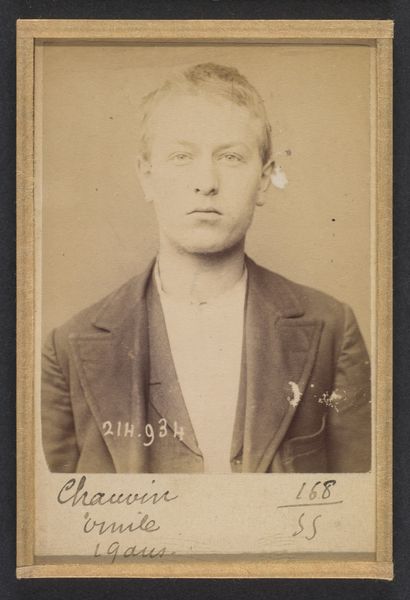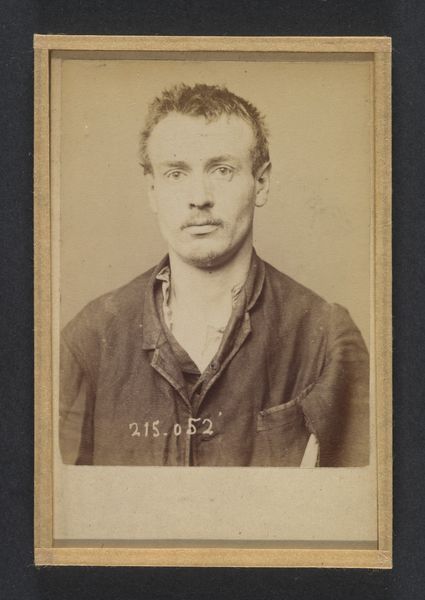
Solier. Auguste. 18 ans, né le 3/3/75 à Cemery-la-Ville. Dessinateur. Anarchiste. 12/1/94. 1894
0:00
0:00
photography, gelatin-silver-print
#
portrait
#
photography
#
gelatin-silver-print
#
history-painting
#
portrait art
#
realism
Dimensions: 10.5 x 7 x 0.5 cm (4 1/8 x 2 3/4 x 3/16 in.) each
Copyright: Public Domain
Editor: Here we have Alphonse Bertillon's photograph of Auguste Solier from 1894, made with a gelatin-silver print technique. It’s striking how this formal portrait also feels like a historical document. I am wondering, how do we even begin to interpret a piece like this? Curator: From a materialist perspective, we need to consider photography itself as a technology and industry. Gelatin-silver prints were mass-produced; what does it mean to use this particular technology to create an image of someone labeled an 'anarchist'? How does that process affect its meaning and reception? Think about the power dynamic at play here: the state, through Bertillon’s system of identification, creating and controlling these images of those deemed "deviant." What's being recorded and for whom? Editor: So you’re saying the act of making this photograph itself is a political statement, less about Solier as a person, and more about power through image production? Curator: Precisely. Bertillon’s system was all about categorization, standardization, a desire to control the population through visual means. Even the numbers scrawled on the image become a crucial element: cataloging the subject, dehumanizing him in a way. The image's materiality—the cheap, reproducible nature of the print—speaks to the accessibility and scale of this system of control. How widely were these images distributed, and to what purpose? Editor: That’s a fascinating point. It’s easy to get caught up in the face and forget the larger system. Curator: And we should not. What’s remarkable is how this one object encapsulates broader social and political concerns surrounding technology, labor, and state power at the end of the 19th century. We see an interplay between the individual and larger societal structures, made manifest through the materiality of this object. Editor: It really makes you think about the social implications behind every artistic choice and material used. Curator: Indeed. It’s all about unveiling those hidden structures of power and production.
Comments
No comments
Be the first to comment and join the conversation on the ultimate creative platform.
